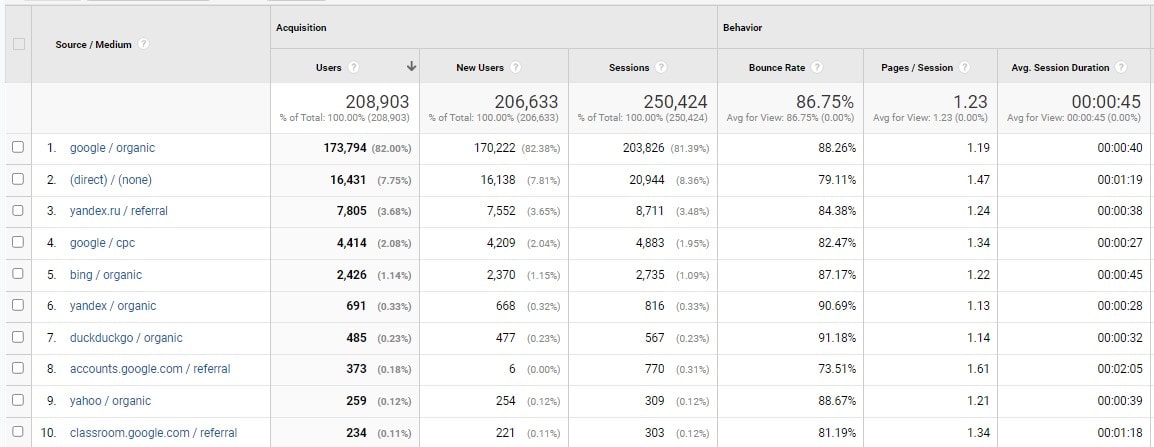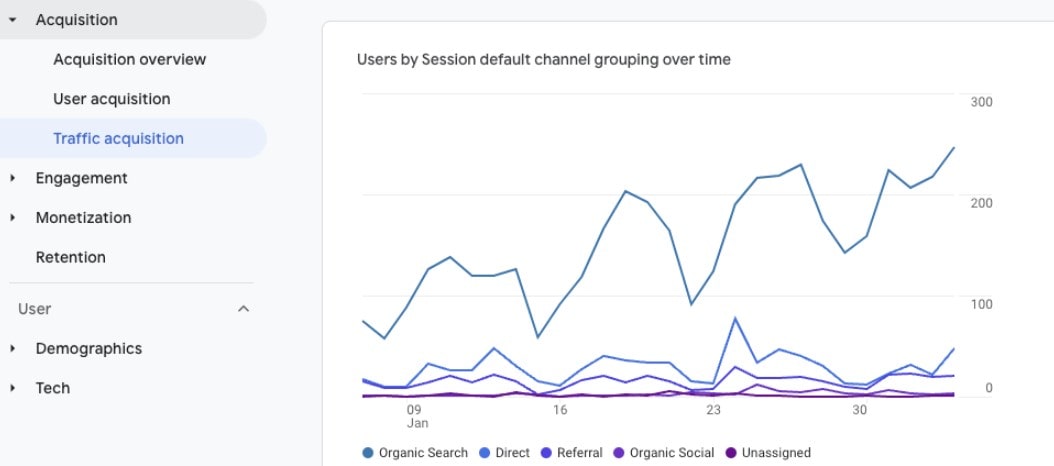Multichannel marketing, engaging customers through a symphony of diverse channels, is a cornerstone in today’s digital marketplace. Creating a cohesive brand experience online and offline requires constructing a narrative that resonates with customers. This approach amplifies your marketing efforts and nurtures a deeper connection with your audience. To fully grasp its dynamics and to analyze your site’s performance through the lens of multichannel marketing, discover how Plerdy can elevate your strategy by offering comprehensive insights into digital marketing and user behavior. Dive into the multichannel marketing world and unlock the potential of every customer interaction.

Definition of Multichannel Marketing
Multichannel marketing, a cornerstone in today’s business landscape, deftly intertwines various channels to engage the modern customer. This strategy, essential in contemporary marketing, spans digital platforms, physical stores, and beyond, ensuring every customer interaction is impactful and cohesive. It’s an art of balancing diverse customer touchpoints:
- Digital outreach through social media and email.
- Physical engagement via retail experiences.
- Personalized online and offline marketing tactics.
This approach amplifies a brand’s voice and deepens customer connections, making multichannel marketing indispensable in crafting compelling, customer-centric narratives.
Explanation of Multichannel Marketing Concept
In the kaleidoscope of modern commerce, multichannel marketing emerges as a dynamic approach, harmonizing various platforms to engage customers effectively. This strategy intricately blends different mediums, ensuring each customer interaction is unique and integrated into the broader marketing narrative. It’s about crafting a seamless journey for the customer, where each channel – digital or physical – plays a pivotal role:
- Digital arenas like social media and email marketing cater to online-savvy customers.
- Traditional outlets such as retail stores offer tangible, personal customer experiences.
- Integrated campaigns that bridge online and offline worlds for a unified marketing message.
Multichannel marketing, therefore, isn’t just about reaching the customer; it’s about creating an engaging, coherent story that resonates across diverse platforms, elevating the customer experience to new heights.
Evolution and Current Relevance
The journey of multichannel marketing mirrors a revolution in customer engagement and brand storytelling. This evolution showcases a transition from traditional, single-channel marketing to a rich, multifaceted tapestry that captivates customers across various platforms. The crux of this transformation lies in:
- Adapting to the digital era, customers seamlessly toggle between online and offline worlds.
- Integrating technology, using data analytics to personalize customer experiences.
- Evolving from mere presence on multiple channels to strategically leveraging each for maximum impact.
Today, multichannel marketing’s relevance is undeniable, resonating deeply with customers who expect consistent, engaging experiences. Be it a small business harnessing social media and local events or a global brand integrating online advertising with worldwide retail – this approach aligns with the dynamic, interconnected lifestyles of modern customers, making multichannel marketing a quintessential element in the mosaic of contemporary marketing strategies.
Key Components of Multichannel Marketing

In the symphony of multichannel marketing, harmonizing various elements is key to enchanting the customer. This marketing strategy weaves together:
- Diverse Channels: Social networking and email integration with retail stores.
- Consistent Messaging: Crafting a unified brand story across all mediums.
- Customer-Centric Approach: Tailoring experiences to meet customers’ unique needs at every touchpoint.
Such a cohesive blend ensures that multichannel marketing doesn’t just reach customers; it engages them deeply, creating resonant experiences that keep them connected to the brand across multiple channels.
Channels Used in Multichannel Marketing
In the multichannel marketing landscape, various channels act as conduits connecting customers to brands. This marketing strategy elegantly orchestrates:
- Digital Spaces: Social media, websites, and email marketing, where customers engage with brands at the click of a button. For example, a tech company may leverage Twitter for updates and YouTube for product demos.
- Physical Outlets: Brick-and-mortar stores and pop-up shops offer tangible brand experiences. A fashion retailer, for instance, might combine in-store styling sessions with online lookbooks.
- Emerging Interfaces: Innovations like virtual reality and interactive apps are carving new pathways in customer-brand interactions.
These channels, integral to multichannel marketing, are not standalone entities but interwoven threads creating a rich tapestry of customer experiences. They ensure marketing efforts resonate with customers daily, fostering lasting connections across multiple touchpoints.
Integration of Channels for Cohesive Strategy
Crucial to the fabric of multichannel marketing is the process of combining different channels into a unified approach. This entails:
- Synchronized Messaging: Aligning the brand’s voice and visuals across channels, ensuring that a customer receives a uniform experience, whether scrolling through social media or walking into a store. For instance, a luxury car brand might feature the same sleek design elements in its Instagram posts and showroom layouts.
- Cross-Channel Data Utilization: Leveraging customer insights gathered from one channel to enhance interactions on another. A bookstore could use online purchasing data to tailor in-store book recommendations.
- Seamless Customer Journey: Orchestrating a fluid transition between channels so customers can move effortlessly from an app to a physical outlet, experiencing consistent service quality and brand ethos.
By integrating channels in such a manner, multichannel marketing ensures that the marketing message resonates across different platforms and enhances the overall customer experience, making each interaction with the brand a cog in a well-oiled machine.
Benefits of Multichannel Marketing
Multichannel marketing, a kaleidoscope in the business world, offers multifaceted benefits. This strategy:
- Expands Customer Reach: By using various channels, from social media to in-store experiences, brands can connect with a wider customer base.
- Enhances Engagement: Tailoring content to each platform, multichannel marketing captivates customers where they spend their time.
- Boosts Brand Recognition: Consistent presence across multiple channels solidifies brand identity in the customer’s mind.
This approach doesn’t just widen the marketing net – it weaves a richer narrative, creating deeper, more meaningful connections with customers in every interaction.
Increased Customer Reach and Engagement
Multichannel marketing significantly expands a brand’s ability to engage with customers across different platforms. This approach isn’t just about scattering marketing efforts; it’s about strategically placing your brand where your customers are most active and receptive. For instance, a fashion retailer might leverage Instagram for visual storytelling, complemented by email campaigns for personalized offers and a user-friendly website for seamless shopping.
Key benefits include:
- Broader audience reach: Multichannel marketing allows businesses to tap into various customer segments.
- Higher engagement levels: Tailored content across channels keeps customers interested and engaged.
- Consistent brand messaging: Unified communication ensures a cohesive brand story.
Enhanced Customer Experience and Satisfaction
Multichannel marketing focuses on customer-centricity at its core, aiming to provide a seamless and personalized experience. Whether through social media, email, mobile apps, or physical stores, each channel offers a unique opportunity to connect with customers on their terms. Tech companies, for instance, can host online webinars to show off their wares, with the help of a Twitter feed to answer customers’ questions in real time and a powerful e-commerce platform to make buying their products a breeze.
This approach results in:
- Personalized interactions: Customers receive relevant information and offers, increasing satisfaction.
- Convenience and accessibility: Multiple channels allow clients to interact with your brand in their preferred way.
- Improved customer loyalty: A positive multichannel experience encourages repeat business and referrals.
In summary, multichannel marketing is not just about being everywhere; it’s about being everywhere that matters to your customers. It’s about creating a symphony of touchpoints that resonate with your audience, leading to increased reach, engagement, and customer loyalty. As a marketer, it’s vital to understand and implement this strategy to stay competitive and relevant in the digital age.
Technology in Multichannel Marketing

In the vibrant tapestry of today’s marketing landscape, technology intertwines seamlessly with multichannel strategies, revolutionizing customer interactions. By harnessing technological advancements, multichannel marketing transforms into a dynamic conduit, connecting customers with brands in unprecedented ways. This fusion elevates customer engagement, ensuring marketing messages resonate deeply across diverse platforms.
Consider these pivotal roles:
- Tailoring experiences: Technology customizes marketing efforts to match individual customer preferences.
- Integrating channels: Seamlessly connects various platforms for a unified customer journey.
- Analyzing feedback: Gathers and interprets customer responses for refined marketing strategies.
In essence, technology in multichannel marketing isn’t just a tool; it’s the architect of enriched customer experiences, crafting a tapestry where every thread is a potential customer connection.
Role of Digital Tools and Platforms
In the intricate web of modern marketing, digital tools and platforms are pivotal architects, shaping the multichannel landscape. Their role transcends traditional boundaries, weaving a tapestry where each thread represents a unique customer interaction. In this digital era, they are not mere tools but the catalysts that drive the engine of customer-centric marketing.
Key functions include:
- Harmonizing customer journeys: Achieving a seamless integration of several channels to establish a cohesive client experience.
- Amplifying customer engagement: Leveraging digital platforms to engage customers more profoundly and meaningfully.
- Personalizing interactions: Tailoring messages to resonate with individual customer preferences.
In industries like fashion, these tools blend online shopping with social media trends, creating a dynamic shopping experience. They integrate booking platforms with customer service channels in travel, ensuring a smooth customer journey. Digital tools in multichannel marketing thus emerge as the crucial linchpins, binding marketing strategies and customer experiences into a cohesive, impactful narrative.
Impact of Emerging Technologies (AI, Big Data)
In the multichannel marketing universe, AI and Big Data emerge as pivotal forces, reshaping the customer engagement landscape. These innovations are igniting a revolution in targeted advertising, more than just tools.
Their profound impact includes:
- Tailoring customer experiences: AI and Big Data craft highly individualized interactions across multiple channels.
- Enhancing marketing precision: They fine-tune marketing strategies, targeting customers with unmatched accuracy.
- Streamlining the customer journey: Integrating various channels into a cohesive, customer-centric narrative.
In retail, AI predicts shopping preferences, and Big Data deciphers consumer behavior, offering personalized shopping experiences. In the travel industry, they customize travel deals and itineraries, catering to individual customer tastes. AI and Big Data in multichannel marketing transcend traditional methods, focusing on bespoke customer journeys that resonate personally, fostering loyalty and enhancing customer satisfaction.
Case Studies: Successful Multichannel Marketing Campaigns
Successful multichannel marketing campaigns blend creativity with strategic precision, establishing a symphony of customer engagement. These narratives illustrate the power of unified marketing strategies:
- Harmonizing digital and physical touchpoints for a seamless customer journey.
- Leveraging data insights to personalize customer experiences.
- Innovatively using multiple channels to maintain consistent, engaging communication.
Such campaigns demonstrate the art of connecting with customers, transcending traditional marketing by integrating various platforms into a cohesive, customer-focused experience that resonates deeply and drives brand success.
Analysis of Innovative and Effective Campaigns
Innovative and effective multichannel marketing campaigns stand out for their creative fusion of customer-centric strategies and diverse communication channels. These campaigns excel by intertwining various platforms, ensuring each touchpoint resonates with the customer.
Key elements include:
- Seamless Integration: Blending online and offline channels for a cohesive customer journey.
- Personalization: Using customer data to tailor experiences across multiple channels.
- Consistent Messaging: Maintaining a unified brand voice across all platforms.
For example, a leading tech company launched a campaign that combined social media, interactive web content, and in-store experiences, successfully engaging customers at multiple touchpoints. A luxury fashion brand merged Instagram, high-end boutiques, and exclusive online content, creating a luxurious and personalized shopping experience. These stories demonstrate that multichannel marketing requires a skillful combination of technology, creativity, and customers to understand and meet client needs.
Lessons Learned and Best Practices
Exploring the realm of multichannel marketing reveals invaluable lessons and best practices crucial for crafting successful campaigns.
Key takeaways include:
- Integrated Customer Experience: Ensuring a seamless transition between channels enhances customer satisfaction.
- Data-Driven Personalization: Utilizing customer insights for tailored content across all platforms.
- Consistency in Branding: Maintaining a uniform brand voice and aesthetic across channels solidifies brand identity.
A standout example is a global beverage company that harmonized its social media, TV commercials, and in-store promotions, creating a unified brand experience that resonated with customers worldwide. Another case is a tech firm that used customer data from its website and social media to personalize email marketing, significantly boosting engagement. These examples underscore the importance of a cohesive, data-informed approach in multichannel marketing, emphasizing the need to continuously adapt and innovate while keeping the customer’s journey at the forefront.
Measuring the Success of Multichannel Marketing

Measuring success is both an art and a science in the kaleidoscope of multichannel marketing. It’s about interweaving customer insights with hard data to gauge the effectiveness of marketing strategies across various channels.
Key metrics include:
- Customer engagement levels across platforms.
- Conversion rates reflect the effectiveness of multichannel strategies.
- Customer feedback, offering insights into the brand experience.
By carefully analyzing these elements, marketers can fine-tune their multichannel approaches, ensuring each campaign reaches and resonates with the target audience, forging stronger customer connections.
Key Performance Indicators (KPIs) and Metrics
In multichannel marketing, Key Performance Indicators (KPIs) and metrics are the compasses that guide marketers to success. These tools track progress and illuminate the path forward, revealing how effectively marketing strategies engage customers across various channels.
Essential KPIs include:
- Conversion rates: Highlighting the effectiveness of each channel in driving customer actions.
- Customer retention rates: Indicating loyalty and satisfaction across the multichannel experience.
- Return on investment (ROI): Assessing the financial efficiency of marketing efforts.
Marketers can fine-tune their multichannel strategies by meticulously monitoring these KPIs, ensuring they resonate with customers and meet business objectives. In essence, these metrics are not just numbers; they’re the marketing journey storytellers, narrating each campaign’s impact on the customer experience.
Methods for Evaluating Campaign Effectiveness
Evaluating the effectiveness of multichannel marketing campaigns requires a blend of analytical prowess and creative insight. This process isn’t just about crunching numbers; it’s about understanding the story behind the data and how it resonates with customers.
Key evaluation methods include:
- Analyzing customer feedback: Gauging customer reactions and satisfaction across various channels.
- Monitoring engagement metrics: Tracking likes, shares, and comments to assess customer interaction.
- Reviewing sales and conversion data: Measuring the campaign’s direct impact on sales figures.
For instance, analyzing point-of-sale data alongside online shopping trends in the retail sector offers insights into how effectively a campaign bridged the online-offline customer experience. In the service industry, customer surveys post-campaign can provide valuable feedback on customer satisfaction. These methods allow marketers to measure success and glean insights for future multichannel strategies, ensuring continuous improvement in engaging and retaining customers.
Conclusion
By integrating several channels into a coherent strategy, multichannel marketing has revolutionized consumer involvement by creating a seamless customer journey that incorporates marketing, customer experience, and channel management.
Here are some key points to remember:
- Every channel plays a unique role in engaging the customer.
- Consistency in messaging across channels is crucial.
- Understanding customer behavior helps tailor the marketing approach.
Multichannel marketing isn’t just about spreading your message; it’s about creating a dialogue with your customers, wherever they may be. With tools like Plerdy, you can analyze site performance from multiple angles, ensuring your multichannel marketing strategy is robust and resonates with your audience. As we close this discussion, remember that the essence of successful multichannel marketing lies in understanding and connecting with your customer at every possible touchpoint.
